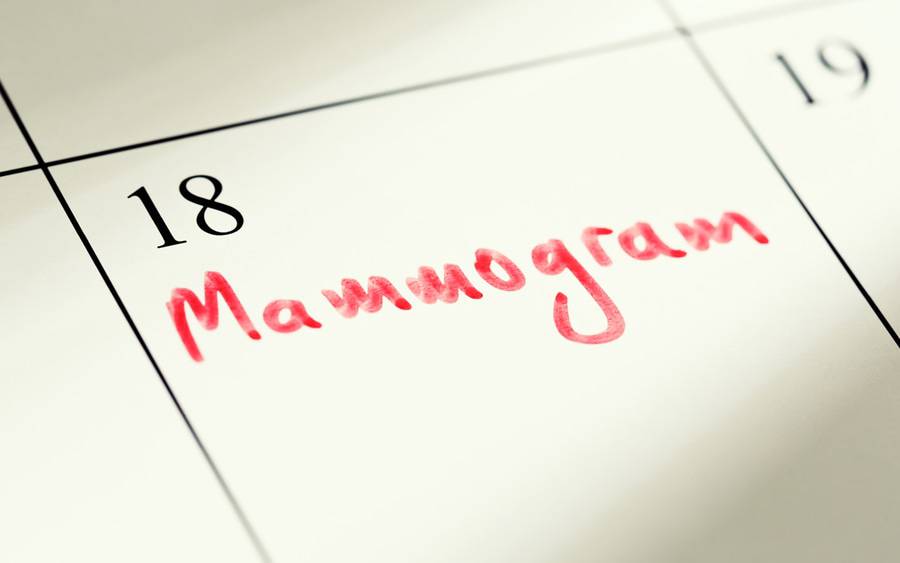5 Facts About Breast Cancer Screening
What every woman should know about mammograms

What every woman should know about mammograms
Ask any of your friends or relatives if they know someone who has had breast cancer, and the answer will most likely be “yes.”
Women in the United States have a one in eight chance of developing breast cancer at some point in their lifetime. In 2020, more than 270,000 women will be diagnosed with breast cancer, according to the American Cancer Society. Except for skin cancer, breast cancer is the most common cancer among women.
Fortunately, when detected early, it is also one of the most treatable. Generally, the earlier breast cancer is detected and treated, the easier and more successful the treatment.
1. Mammograms can mean early detection and more successful treatment
Annual screening mammograms are meant to look for changes in the breasts of women who do not have clinical signs of breast cancer, which makes them very important.
“Annual screening mammograms can detect breast cancer at very early stages, before a patient or clinician can even feel a lump. The earlier the detection, the higher the chance of cure,” says Rebecca Hsu, MD, a diagnostic radiologist with the Emily Fenton Hunte Breast Care Center at Scripps Green Hospital.
Yearly screening mammograms play a major role in helping women who have breast cancer successfully fight the disease.
2. Breast cancer screening is important even if you don’t have family history of disease
Only about 15 percent of women with breast cancer have a family member with the disease, according to the American Cancer Society.
There are other risk factors to consider when it comes to breast cancer. Some risk factors are modifiable, such as diet and exercise, and others are not, such as age and sex. Most breast cancers are found in women who are 55 and older.
Breast cancer screening exams help find breast cancer at an early stage. When found early, the chances for successfully treating the disease are greatest.
Along with regular exams, practice awareness. This means you should stay familiar with your breasts. That way you’ll notice changes, like a new lump or mass. Then, report them to your doctor without delay.
3. Screening recommendations depend on several factors
The screening recommendations below apply to most women.
Age 20 to 39
- Clinical breast exam every one to three years with a health care provider who checks for lumps or other changes.
Age 40 and older
- Clinical breast exam every year
- Mammogram every year
Women at increased risk
Women at increased risk have a higher chance of getting breast cancer. This doesn’t mean you will definitely get cancer. But, you may need to start screening at an earlier age, get additional tests or be tested more often.
You’re at increased risk for breast cancer if you fall under one or more of these groups.
- History of radiation treatment to the chest.
- Genetic mutation, including an abnormality in the BRCA 1 or BRCA 2 genes, CDH1, Bannayan-Riley-Ruvalcaba Syndrome.
- History of lobular carcinoma in situ.
- Five-year risk of breast cancer 1.7 percent or greater at age 35 or older, as defined by a Gail Model calculation. Calculate your risk using the Gail Model.
- A life-time risk of breast cancer 20 percent or greater, as defined by models dependent on family history. Women with a strong family history of breast cancer should consider speaking with a genetic counselor.
4. Mammograms are safe
Mammograms do use very low doses of radiation to screen the breast tissue, but the benefits of screening outweigh any possible risks from radiation exposure.
“Most breast imaging departments, including those at Scripps, use digital mammography, which has replaced conventional film-screen mammography. Digital mammography offers better quality with less radiation,” says Dr. Hsu. “Many facilities, including some at Scripps, also offer tomosynthesis (or 3D mammography) which often decreases the need for additional imaging and may be beneficial in patients with dense breast tissue.”
During a mammogram, the breast is compressed between two plates before being X-rayed. The breast tissue must be as flat as possible in order to get a precise X-ray. Some women may find the compression uncomfortable. Let your mammography technician know if the position you’re in is painful; she may be able to change it or decrease the pressure a bit.
5. Mammograms are affordable — or even free
If you have health insurance under the Affordable Care Act and are age 40 or older, your annual mammogram is fully covered by your plan, even if you haven’t met your deductible.
If you don’t have insurance, several national breast cancer organizations sponsor low-cost or free mammogram programs for eligible women. Our staff at Scripps Health can provide you with contact information for programs in your area. In addition, Scripps and many other breast care centers will set up a payment plan if you need it.